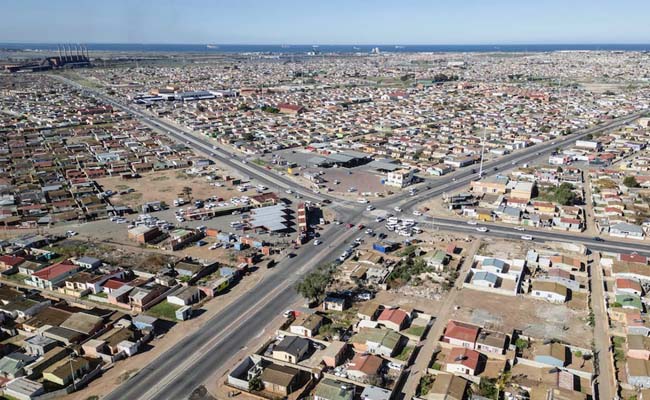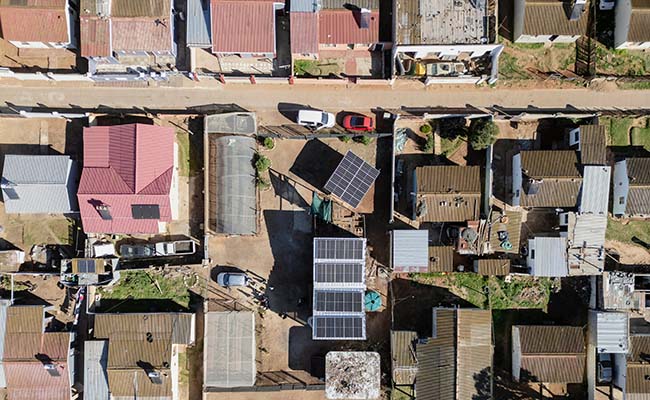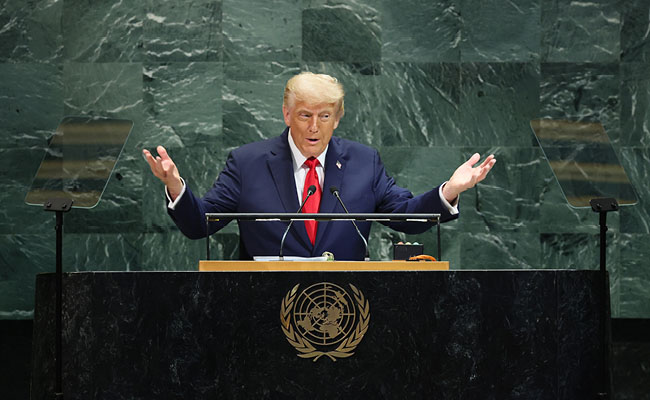Patrick Bam, a member of a co-operative in the Eastern Cape township of KwaZakhele, says a new sun-powered energy project has transformed the economy of his community.
“We were losing a lot as a community, especially as our food and appliances were being damaged due to load-shedding,” he says. “But with this project, we’ve been able to generate our own electricity and even sell it to the municipality.”
Called the SalTuba Cooperative, the project is a flagship example of socially-owned renewable energy, and a model for energy democracy. It’s a model that has inspired other townships to take on similar initiatives.
Owned by residents of KwaZakhele in Gqeberha through a co-operative, the project is built on municipal land and governed collectively. Each household holds a stake and a vote, and members decide together how to reinvest revenue from electricity generated, whether into food gardening or other priorities.

Unlike traditional energy projects, which are owned by private individuals, companies or government, participants in socially-owned renewable energy (SORE) projects take charge of their own power supply.
While there is no official registry of SORE projects in South Africa, research by Oxpeckers has identified more than 20 operating initiatives across the country.
One example is the eKhenana Solar Commune, based in the Abahlali baseMjondolo settlement in Durban, which powers a library, study hall and phone-charging station.
On a larger scale, the Tsitsikamma Community Windfarm in the Eastern Cape is cited as a landmark example of community ownership. A trust representing the local AmaMfengu people owns 9% of the windfarm, which began in 2016 and supplies electricity to Eskom under a 20-year power purchase agreement (PPA).
Insulation from blackouts
SalTuba includes 36 households and began in 2019 as a response to rising electricity tariffs, relentless load-shedding and the powerlessness township residents felt over their energy supply.
Initially focused on food gardening and local business development, it evolved into a pioneering energy project when its first solar panels were installed.
In the first 20 months, the project generated approximately 8,800kWh of electricity, equivalent to R966 per month based on municipal tariffs. The solar array is mounted on a carport structure and a community-built waste recycling facility.
“I joined this project because I saw the impact it brought to the community,” says Lubabalo Mkhiva, a member of the community who has acquired technical skills in solar installation and energy management. “It encouraged me to be part of it, seeing the unemployment rate and poverty affecting our small communities.”

But navigating municipal systems, and connecting SalTuba’s power to the grid and earning revenue from it has been anything but straightforward.
Khaled El-Jabi, director at Energyworx, the engineering firm that helped design the system and structure of its PPA, says the project faced serious bureaucratic hurdles.
“There was no mechanism within the municipality to allow this type of connection to the grid,” he explains.
The PPA, signed with PowerX, an independent energy trader, spans 10 years and is structured using a time-of-use tariff model, split between peak, standard and off-peak.
El-Jabi warns that developers need to be “extremely patient” since changing the system “requires persistence, political navigation and detailed planning”.
David Breitfeld, development adviser in the Nelson Mandela Bay municipality’s electricity department, says the municipality supports the project in principle but is constrained by outdated policies and procurement rules.
“We’re happy to connect community generators,” he says, “but legally we can’t just buy electricity from anyone. If we buy from SalTuba, then why not the next household? We’d need to run 10,000 tenders. That’s not practical.”
Instead, the municipality enables “net billing”, which allows the project to reduce its municipal electricity bill to zero, but not earn cash. A smart meter will record when electricity is generated and at what tariff value. “If you export power during peak winter hours, that’s worth far more than during off-peak times,” he says.
Wheel deal
SalTuba’s turning point came in 2022, when the municipality enabled wheeling – a system that allows SalTuba to sell electricity through the municipal grid to PowerX, which pays the co-operative while covering wheeling charges.
But Breitfeld admits there are still problems.
Since SalTuba’s solar installation is not physically linked to residents’ homes, community members don’t see reduced household energy bills directly. “If they had installed the system in front of their home meters, they could have consumed the power directly before it entered the grid – that would have saved them money immediately.”
Instead, power goes straight into the broader grid, making it difficult to attribute usage to individuals without more complex metering.
Nonetheless, SalTuba proves that communities can successfully manage renewable energy projects, says Mareka Mokwatlo, manager of Transition Township pilot projects, a research initiative focused on sustainable local economies.
In 2024, the project was awarded a three-year research grant by the National Research Foundation to scale up the SalTuba pilot and build other pilot projects.
For communities considering similar projects, Mokwatlo offers practical advice.
“Tap into your existing assets first, like skills that are already there. We don’t have to go outside to hire people in our working-class communities. We know we have artisanal skills, and we have stokvels that can be used towards funding our operations,” she says.
Also, partner with local businesses first. “For this type of project, start small, pilot and design to scale. We started with 15 panels on a carport, and now there’s a structure and 40 panels,” she says.

Policy changes
Professor Janet Cherry, head of the department of development studies at Nelson Mandela University, says SalTuba’s example is vital to the broader just energy transition.
“Some critics think that this model is only going to meet a small part of the country’s energy needs. Our research shows otherwise: in theory household production could meet 83% of the whole country’s planned energy needs,” she says.
Cherry says this can be a game-changer for local communities.
“You don’t have to have a big solar plant in the middle of the desert, you can actually do it on every single roof or every open space,” she says. “The biggest opportunity is the inclusion of community-owned energy systems that can alleviate the electricity constraints experienced in South Africa.”
But government policies need to change to make this effective, Cherry says.
Municipalities need to be able to buy electricity from community co-operatives like SalTuba, but the current regulations are not supportive. “We need policy changes to make it easier for community co-operatives,” she says.
For Cherry, this is a practical example of the just transition in action.
“The just transition is not about people being laid off from the coal mines and then unemployment goes up; it’s about completely restructuring the economy to be owned and controlled by ordinary people,” she says.
This story was written by Oxpeckers Investigative Environmental Journalism, Africa’s first journalistic investigation unit focusing on environmental issues.

Top image: KwaZakhele, Gqeberha. Picture: Ihsaan Haffejee
Sign up to Currency’s weekly newsletters to receive your own bulletin of weekday news and weekend treats. Register here.











